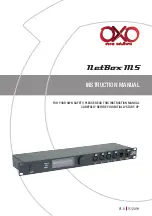
Page 6
Power rating of Microwaves
The power rating of the microwave generally refers to the cooking power. The
electrical power consumed by the microwave will be approximately 2 times the
cooking power. The “
surge power
” of the inverter should be 2 times the electrical
power (i.e., 4 times the cooking power). Please note that the surge power of the
microwave is not as long as the motor load and hence, the surge power of the inverter
can be considered to determine adequacy of meeting the starting surge power
Powering a water supply pump
A water well or pressure pump often places the greatest demand on the inverter.
It warrants special consideration. Most pumps draw a very high surge of current
during start up. The inverter must have sufficient surge capacity to handle it while
running any other loads that may be on. It is important to size an inverter sufficiently,
especially to handle the starting surge (If the exact starting rating is not available,
the starting surge can be taken as 3 times the normal running rating of the pump).
Oversize it still further if you want it to start the pump without causing lights to dim
or blink.
In North America, most pumps (especially submersibles) run on 240 VAC, while smaller
appliances and lights use 120 VAC. To obtain 240 VAC from a 120 VAC inverter, use a
120 VAC to 240 VAC transformer. If you do not already have a pump installed, you can
get a 120 volt pump if you don’t need more than 1/2 HP.
Idle power
Idle power is the consumption of the inverter when it is on, but no loads are running.
It is “wasted” power, so if you expect the inverter to be on for many hours during
which there is very little load (as in most residential situations), you want this to be as
low as possible.
Phantom and idling loads
Most of the modern gadgets draw some power whenever they are plugged in. Some
of them use power to do nothing at all. An example is a TV with a remote control. Its
electric eye system is on day and night, watching for your signal to turn the screen on.
Every appliance with an external wall-plug transformer uses power even when the
appliance is turned off. These little loads are called “phantom loads” because their
power draw is unexpected, unseen, and easily forgotten.
A similar concern is “idling loads.” These are devices that must be on all the time in
order to function when needed. These include smoke detectors, alarm systems, motion
detector lights, fax machines, and answering machines. Central heating systems
have a transformer in their thermostat circuit that stays on all the time. Cordless
(rechargeable) appliances draw power even after their batteries reach a full charge. If
in doubt, feel the device. If it’s warm, that indicates wasted energy.








































